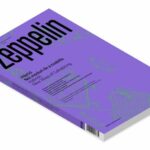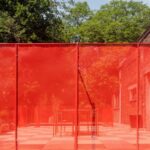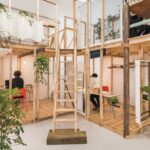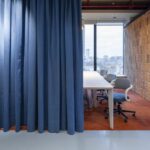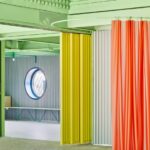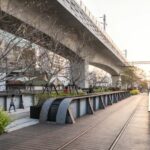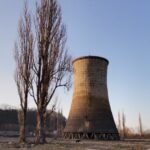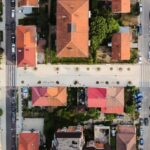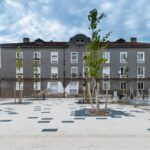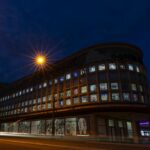Coordinators: Ștefan Ghenciulescu, Cătălina Frâncu
Intro:
We have become rather accustomed to thinking of territory in terms of clear categories: city/village/nature, industry/agriculture/services, built/unbuilt, work/living etc.
And this is, of course, because we generally need categories to be able to think structurally, and, it seems, to simply think and communicate. Perhaps, when talking about urbanism and architecture, radical cut-outs are also related to the obsession with modernity and to separating city functions not just conceptually, but also physically, to decomposing and then recomposing fundamental elements.
Obviously, the limitations are not so strong in real life, and this has been increasingly evident of late, when the anthropic environment tends to overwhelm the natural one, when technology leads to creating spaces that are completely decoupled from the physical one. We will not go into any detail here: there would be a huge discussion about ecology and ecosystems, about the accelerated urbanization of the rural, and also about the recovery and reintroduction of nature into the city; about urban agriculture as a project, and also about bears wandering into the cities that have invaded their habitat, joining the other furred or feathered urban inhabitants.
Whether we like it or not, most of us are living in hybrid environments. This Dossier is focused on the acknowledgement and on the voluntary integration of hybridization and cohabitation. We take a look at overlays and transformations, at the conciliation of various energies and interests, at the regeneration which not only heals, but also moves things further.
The first articles are more literally about hybrids and participating to or forming ecosystems, namely about the reciprocal diffusion between architecture and nature and about the organization of cohabitation. This cohabitation takes place literally and programmatically within the multi-species architecture implanted by Enrique Espinosa (Eeestudio) and Lys Villalba in the Spanish rural territory. Nature, infrastructure, and public space can cohabitate. This is proven by SCOB, with a roundabout designed as an autonomous ecosystem and an urban marketplace, structured by the underground water infrastructure framework and by the plantation of local varieties.
The green corridor in Taichung (Taiwan) is a heroic-scale operation: over a length of 1.7 km, a public landscape invades, leans on, and metamorphosizes a heavy infrastructure work. The typical anti-urban barrier of multi-layered circulation, with pillars, platforms, etc., becomes a dynamic and complex place – a multi-layer linear park.
The scale regeneration of an entire town, and not of an energic metropolis, but of a post-industrial town, is the subject of a mini-file within the main one. We have undertaken an extended analysis, with detailed interviews, dates, etc., because Reșița – a centre of modernity ever since the 18th century, then subjected to brutal de-industrialization – is an example of rebirth. Unique in Romania and valuable enough to serve as an international model, even if the process is still underway.
Another extensive article is the one about the recent projects of L’atelier – Nomadic Architecture Studio: cohabitation, negotiation, and experiment in 4 dwellings with minimal areas, the plaza where cars do not go away, but go rarely and slowly, or in the ideas for public spaces on the outskirts.
We end by two materials about working places and about moving on from the open space and cubicle to complex environments, with various degrees of openness and sharing and with very mobile occupancy. The two office spaces designed by Corvin Cristian and his partners evoke the urban atmosphere and also introduce domesticity areas. João Gonçalo Lopes and Guilherme Rodrigues transformed an auto shop into an extension of the public space, a mini-city based on a structural grid and on recovered materials.
*The full Dossier can be read in Zeppelin magazine #166 (summer issue, 2022)

